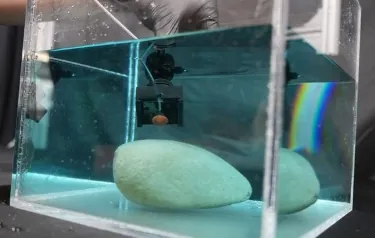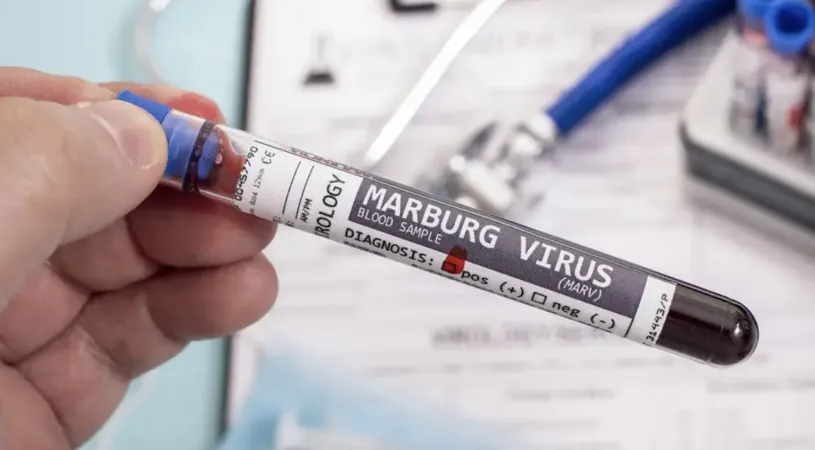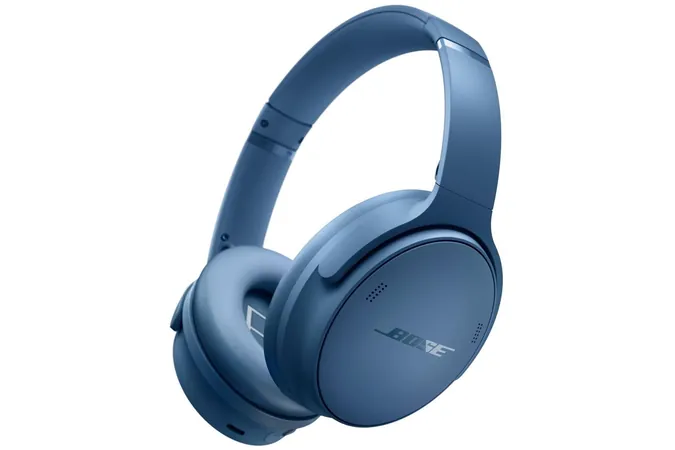
Octopus-Inspired Technology Revolutionizes Underwater Rescue and Salvage Operations!
2024-10-11
Author: John Tan
Introduction
Virginia Tech researchers have unveiled groundbreaking technology that draws inspiration from the natural marvel of octopus suckers, enabling precise underwater manipulation of challenging objects. This innovation could profoundly impact salvage and rescue missions, offering new methods for handling underwater debris.
The Fascinating Efficiency of an Octopus
Led by Associate Professor Michael Bartlett, the team has created a revolutionary octopus-inspired adhesive that can quickly grasp and safely release items submerged in water. Imagine being able to grip slippery rocks, delicate shells, or even soft jelly-like beads with ease – this new technology promises that and more.
“What captivates me is the octopus's ability to hold onto an object with immense strength and release it almost instantaneously,” Bartlett explained. “This adaptability is remarkable, especially considering the rough and irregular nature of many underwater objects.”
To replicate this extraordinary capability, the researchers examined the structure of octopus suckers, particularly the outer shape known as the infundibulum. They designed an elastic, curved stalk with a deformable membrane that alters its shape according to the surface it's gripping. This innovation allows for multi-surface adhesion and significant adaptability.
Unmatched Strength and Speed
The result? An octopus-inspired adhesive that is 1,000 times stronger when engaged compared to its relaxed state, with the transition occurring in just 30 milliseconds. This means divers can grasp slippery objects without exerting excessive force, allowing for quick and efficient retrieval.
The new adhesive exhibits high attachment strength across various surfaces, from rough and curved to irregular shapes, making it invaluable for diverse underwater applications. In practical demonstrations, research team members showcased their capability to construct underwater cairns, balancing different-sized rocks while also adeptly picking up soft, jelly-like materials.
*“This manipulation mimics the behaviors of an octopus as it carefully organizes its environment,”* noted Graduate Research Assistant Chanhong Lee.
A Revolution in Underwater Operations
This technology's reliability was put to the test, showing consistent attachment over multiple trials. In one instance, the adhesive held a rugged, curved rock for more than seven days underwater, enabling it to be released as needed—crucial for scenarios where holding onto an object for extended periods is essential.
Bartlett previously developed the Octa-Glove, a device that incorporated octopus-like adhesives paired with LIDAR sensors. This glove can gently attach to objects without the risk of damaging them, allowing for both secure grips and easy releases. The innovative design enhances the glove's gripping ability, making it a prime tool for rescue divers, underwater archaeologists, and even healthcare professionals dealing with wet conditions.
The Future of Underwater Exploration
“We aim to leverage our new adhesive design to enhance the capabilities of the Octa-Glove,” Bartlett affirmed. “Navigating underwater environments entails numerous challenges, and this advancement brings us closer to mimicking the octopus's incredible dexterity.”
As researchers continue to refine and expand upon this technology, we may soon see a new era of underwater exploration and manipulation, thanks to the marvels of nature! This advancement not only opens up opportunities for efficient salvage and rescue operations but also promises to transform how we interact with our underwater environments. Stay tuned for what lies beneath!


 Brasil (PT)
Brasil (PT)
 Canada (EN)
Canada (EN)
 Chile (ES)
Chile (ES)
 España (ES)
España (ES)
 France (FR)
France (FR)
 Hong Kong (EN)
Hong Kong (EN)
 Italia (IT)
Italia (IT)
 日本 (JA)
日本 (JA)
 Magyarország (HU)
Magyarország (HU)
 Norge (NO)
Norge (NO)
 Polska (PL)
Polska (PL)
 Schweiz (DE)
Schweiz (DE)
 Singapore (EN)
Singapore (EN)
 Sverige (SV)
Sverige (SV)
 Suomi (FI)
Suomi (FI)
 Türkiye (TR)
Türkiye (TR)